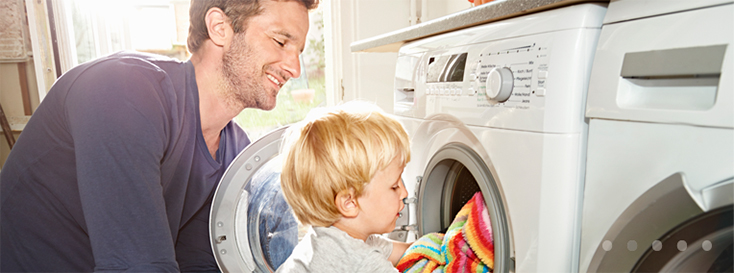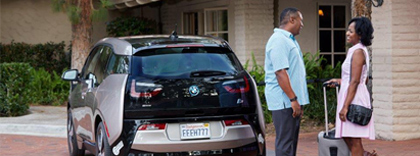

|


Energy tips for desert living include many of the same things that apply
to saving energy anywhere. But there are also some steps you can take
that are uniquely suited for a home or business in a desert environment.

|
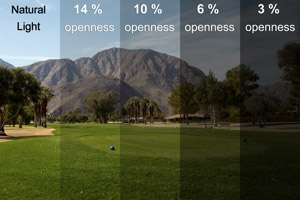 |
1.
Use solar shades on windows, especially
windows what get direct sunshine. When it's hot outside, direct
sunlight through a window heats the interior of the room and makes your
air conditioning run harder. When it's cold outside, that same
sunlight will warm a room and cause your heating system to run less.
Windows account for more than half of a home's summer heat.
You can select solar shades with different levels of opacity.
Open weaves allow you
to see more of what is outside than tight weaves. Solar
shades can block anywhere from 90- 99% of the inbound sunshine but still
allow you to view outside, preserving your view.
|
| |
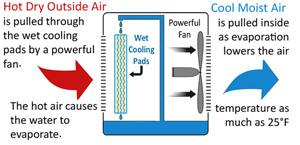 |
2. Use an evaporative cooler
instead of an air conditioner whenever twhenever the conditions
outside are hot and dry. Evaporative coolers, also called swamp
coolers, cool the inside air by using a fan to draw outside air through
a moist filter. The cooling effect of evaporation brings down the
temperature inside your home. Evaporative coolers can save you as much
as 80 percent in electricity compared to air conditioning
|
| |
|
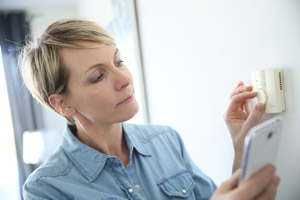 |
3.
Install a smart thermostat — With a smart thermostat, you can
adjust the setting anywhere anytime using your smart phone. Program your
thermostat Program it to work around your summer schedule. Set your
thermostat to cooler when you are home and set it higher for times when
you are away. Visit sdgemarketplace.com for rebates on smart thermostats
and other energy efficiency products.
|
| |
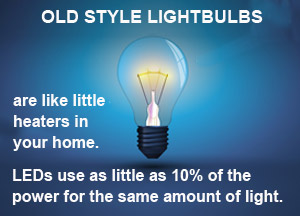 |
4.
Eliminate indoor heat sources. Incandescent light bulbs are
like tiny heaters and they throw off lots of heat. Your air conditioner
or evaporative cooler then needs to use more energy to get rid of that
heat and cool the home. LED lights create about 75% less heat than the
old style incandescent bulbs and can reduce your lighting bill by as
much as 75%.
|
| |
 |
5. Check your time of use. Utilities now have rates
based upon when you use energy during the day and night. Peak use is
often from about 4 p.m. to 9 p.m., the times when everyone is using
their daily maximum of electricity. If you can shift your energy use
outside of that time frame you will save money on your energy use.
|
| |
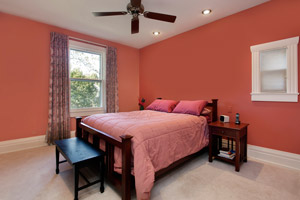 |
6. Use ceiling fans.
Ceiling fans use very little electricity and they circulate the cool
area created by air conditioning or evaporative cooling. Ceiling
fans make you feel cooler using evaporation and air movement; they don't actually lower
the temperature in a room. Turn fans off when you are not using a
room.
|
|
|
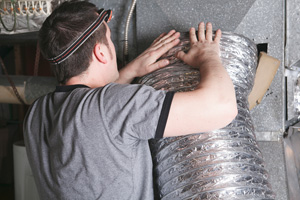 |
7.
Seal and insulate your ducts This is a potential large
savings for both winter and summer. Leaks in duct work can account for more than
30% of wasted energy as heated or cooled air goes into attic space and
never makes it into living space. The easy way to know if you
house has leaky ducts is to have an energy audit and duct blaster test
performed.
|
| |
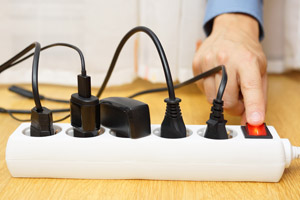 |
8. If you are not using it, turn
it off. TVs, computers, and other electronics create heat and use
power. If you are not using it, just turn it off.
Electronic items all use
residual power, even when they are turned off.
|
|
|
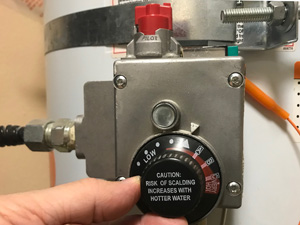 |
9.
Check your water heater temperature. If the water that comes out
of the faucet or showerhead is so hot that you need to mix in an equal
amount of cold water to get the temperature just right, then you are
using more power to heat the water than you need to use.
|
| |
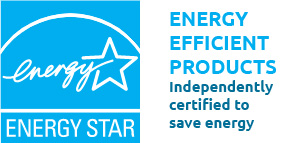 |
10. Replace old appliances with
new energy efficient ENERGY STAR®
appliances. Advances in
technology have made new refrigerators, air conditioners, pool pumps,
and many other home appliances far more energy-efficient than older
models.that use far less energy than their earlier versions. Savings
will vary depending upon the type of appliance and individual usage
patterns. Refrigerators, air conditioners, and pool pumps, which are
the top three appliances used in at use in the desert communities, that
offer the biggest opportunities for big energy savings. if replaced with
newer energy efficient versions. Check on rebates that your electric
utility might offer for the replacement of older appliances.Visit
sdgemarketplace.com for rebates to offset the cost of upgrading to more
energy-efficient appliances.
|
| |
 |
11. Replace your air conditioner and heating system filter
every three months, and as soon as every month if conditions have been
dusty. It is dusty in the desert and the filter keeps dust, sand, and
other materials suspended in the air from circulating in the home. All
of those tiny particles stay in the filter, clogging it up, and making
the motor that work extra hard. That makes the motor hot, sharply
reduces the cooling or heating effect of the unit, and shortens its life
span as well. Some systems have filters that can be cleaned instead of
replaced.
To get started, just take your filter to a hardware store and buy a half
dozen or more to have on hand and make the replacement process easy.
|
|
|
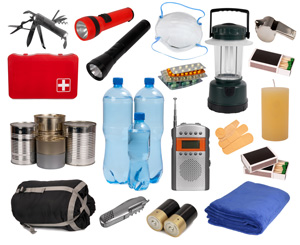 |
12. Be prepared for emergencies.
The desert is prone to many types of natural events that can cause
outages in the power supply, high winds, heavy rain, flash floods, and
earthquakes. Utilities are continually hardening their
infrastructure to make it less prone to natural disasters, but sometimes
mother nature will prevail. Here's what you need, as a minimum:
 |
7 - 10 gallons of water per
person. Commercially bottled water is safest and can be
stored for longer periods, if not opened, than containers you
fill yourself. |
 |
Store extra canned foods,
foods that do not require cooking, plus a manual can opener. |
 |
Battery packs for cell phones |
 |
Important prescription
medications, necessary medical supplies, and over the counter
medications. Also:
SDG&E Medical Baseline program. |
 |
Emergency lighting -
flashlights, battery power lanterns. Replace your
batteries at least once per year. Batteries wear out
faster than usual if stored in hot locations. |
 |
Keep your gas tank at least
half full for emergency transportation |
 |
Fuel for a backup
generator, if you have one. |
 |
Battery powered or
hand-crank radio to listen for emergency instructions. |
 |
First Aid supplies |
 |
Enough cash for essential
purchases. Credit card payment systems may not be
functional. |
 |
Additional information from SDG&E about emergency preparedness. |
|
|
|
|















